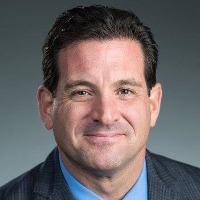CPA firm owners know the drill: when you sell your practice, you’re looking at a tax bill. But there’s a special provision in the tax code that could change your entire exit strategy: Qualified Small Business Stock (QSBS).
Here’s how it works: If you structure your practice as a C corporation and meet certain requirements, Section 1202 of the tax code allows you to exclude up to 100% of your capital gains from federal taxes when you sell, up to a $10,000,000 limit or 10 times the adjusted basis of the stock–whichever is greater.
That means if you sell your practice for $3 million more than your basis, instead of paying $600,000 or more in federal capital gains taxes, you could pay zero. That’s not a deferral or a reduction – it’s a complete exclusion of federal capital gains tax.
This isn’t a new loophole, either – QSBS has been part of the tax code since 1993, and the 100% exclusion has been permanent since 2015. Yet many practice owners aren’t taking advantage of it because they’re operating as S corporations or LLCs. While these structures might make sense for current operations, converting to a C corporation could unlock this significant retirement planning opportunity.
Additionally, it’s crucial to understand that operating as a C corporation involves double taxation – your practice’s income is taxed at the corporate level, and then any distributions to shareholders are taxed again as dividends. This means the potential QSBS tax savings must be substantial enough to offset the increased tax burden during your years of operation as a C corporation.
Key Eligibility Requirements for CPA Practices
For your practice to qualify for QSBS benefits:
Entity Structure: Your practice must be a domestic C corporation. While this differs from traditional CPA firm structures, the potential tax benefits may outweigh the corporate-level taxation for practices planning an eventual sale.
Active Business Requirement: At least 80% of your practice’s assets must be used in the active conduct of the business. For CPA firms, this typically includes your client relationships, work-in-process, and operational assets.
Gross Asset Limitation: The practice’s total gross assets must not exceed $50 million before and immediately after stock issuance. This threshold typically accommodates most independent CPA practices.
Strategic Planning Opportunities
Succession Planning Integration
Once you’ve established your practice as a C corporation and met the QSBS requirements, finding buyers willing to purchase stock (rather than assets) becomes crucial to realizing the tax benefits. While many buyers traditionally prefer asset purchases, there are two common approaches that work well with QSBS:
Employee Stock Ownership Plans (ESOPs)
Setting up an ESOP can be a powerful exit strategy. Here’s how it works: you convert your practice to a C corporation and establish a special trust that holds company stock for the benefit of your employees. The employees don’t directly buy the stock – instead, the ESOP trust purchases it on their behalf, often using borrowed funds. This approach not only preserves your QSBS benefits but also offers additional tax advantages unique to ESOPs. Many practice owners appreciate how an ESOP allows them to gradually transition ownership while maintaining their practice’s culture and independence.
Internal Succession Through New Partners
Another approach is bringing in future owners directly, typically your most promising senior managers or rising stars within the firm. Instead of these future partners buying existing stock (which wouldn’t qualify for QSBS), your corporation issues new shares directly to them – this is what we mean by “original issue” stock. The key here is that QSBS benefits only apply to newly issued shares, not shares transferred from existing owners.
You can structure these buy-ins gradually over several years, allowing your future partners to purchase portions of the practice as they develop their leadership roles. This approach often works well for practice owners who have identified specific individuals they trust to carry on their legacy.
Remember, though – if you’re currently operating as a partnership or LLP, you’ll need to convert to a C corporation structure first. This is a significant change that requires careful planning, but the potential tax savings through QSBS can make it worthwhile.
Timing Your QSBS Strategy
Converting your practice to take advantage of QSBS requires careful timing. Most CPA practices are structured as S corporations or partnerships, and switching to a C corporation is a big move that impacts your taxes significantly. Here’s the key timing challenge: you need to hold the C corporation stock for five full years to qualify for the QSBS tax exclusion. That means if you’re thinking about retiring or selling in six years, you need to start this process soon.
The five-year clock doesn’t start until after your conversion is complete. We see many practice owners miss out on QSBS benefits because they start planning too late. During those five years, you’ll be operating under C corporation tax rules – quite different from what you’re used to with an S corporation or partnership. While the end goal of tax-free gains is attractive, you need solid guidance to navigate the transition period effectively.
Understanding the Valuation Cap
QSBS comes with an important limitation: your practice’s gross assets can’t exceed $50 million. This might sound like a high threshold, but it includes everything – your accounts receivable, office equipment, and, most importantly for CPA practices, your goodwill. Professional goodwill often represents the largest asset for successful practices.
This valuation cap needs constant attention. Your practice’s growth, which is generally good news, could actually push you over the limit and disqualify you from QSBS benefits. We’ve seen cases where acquiring another practice or even strong organic growth pushed firms over the threshold unexpectedly. The key is proactive monitoring and planning – knowing where you stand relative to the cap and how different growth scenarios might affect your QSBS eligibility.
Common Pitfalls to Avoid
Watch out for stock redemptions – they’re the number one way practice owners accidentally lose their QSBS benefits. A redemption happens when your practice buys back its own stock, and the IRS pays close attention to these transactions. The danger zone is two years before or after issuing QSBS shares. For example, if you issue QSBS-qualified stock to a new partner and then have your corporation redeem a retiring partner’s shares a year later, you could void the tax benefits for everyone. Instead, when partners need to exit, have the remaining partners buy the shares directly rather than having the practice redeem them. This small structuring difference can protect millions in tax savings.
Integration with Your Retirement Strategy
While QSBS offers compelling tax advantages, it shouldn’t drive your entire retirement strategy in isolation. Think of QSBS as one powerful gear in a complex retirement machine. Your comprehensive plan needs to account for how the five-year QSBS holding period aligns with your ideal retirement timeline and succession strategy. This timing affects everything from when you’ll claim Social Security benefits to how you’ll bridge any healthcare coverage gaps before Medicare eligibility.
Consider, too, how the QSBS structure impacts your ability to diversify investments outside the practice – you don’t want all your retirement eggs in one basket, even if it’s a tax-advantaged one. For larger practices, estate planning becomes particularly critical since QSBS benefits can significantly impact your wealth transfer strategy to the next generation. Success requires carefully orchestrating these elements with your QSBS timeline while maintaining enough flexibility to adapt to changing tax laws and market conditions.
Conclusion
Is the potential for tax-free gains worth navigating the complexities of C-corporation taxation for the next several years? It’s a question that deserves careful consideration, especially when you’re already juggling the daily demands of running your practice, planning for succession, and mapping out your retirement strategy.
We know these aren’t easy decisions to make alone. Let’s sit down together and run the numbers for your specific situation. We can help you evaluate whether QSBS could be the missing piece in your retirement puzzle or if your current structure better serves your long-term vision.











